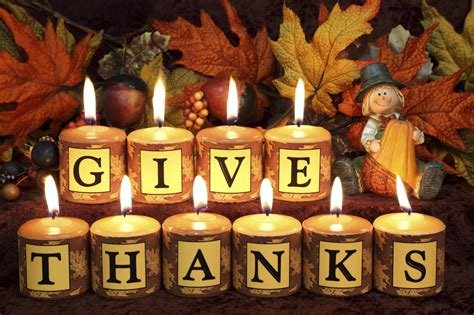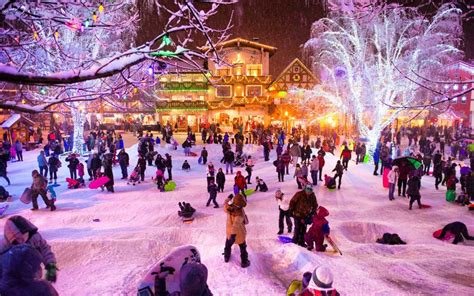The History and Traditions of Thanksgiving: Celebrating Gratitude and Unity
As we approach the Thanksgiving holiday, it’s important to take a step back and reflect on the rich history and traditions that have shaped this beloved celebration. From its origins as a harvest festival to its modern-day status as a national holiday, Thanksgiving holds a special place in the hearts of many Americans. In this blog post, we will delve into the fascinating history of Thanksgiving, exploring its origins, the traditions that have evolved over time, and the symbolism behind the foods and activities that are synonymous with the holiday. From the first Thanksgiving feast shared between the Pilgrims and Native Americans to the iconic Thanksgiving parades and football games that have become synonymous with the holiday, we will uncover the story behind this day of gratitude, unity, and togetherness. Join us as we embark on a journey to discover the history and traditions of Thanksgiving, and learn why this holiday continues to hold a special place in the hearts of so many.
Origins of Thanksgiving: A Historical Overview
Thanksgiving, as celebrated in the United States, has its origins in the early 17th century when the Pilgrims sailed from England to the New World in search of religious freedom. They settled in Plymouth, Massachusetts, and after their first year of struggle, they finally had a successful harvest in 1621. This led to a three-day feast with the Wampanoag Native Americans, which is often cited as the first Thanksgiving.
The concept of giving thanks and celebrating the harvest has deep roots in human history, with similar traditions found in many cultures around the world. These ancient Harvest Festivals were a way for people to express gratitude for the bounty of the land and the abundance of food. The Pilgrims’ Thanksgiving feast can be seen as part of this broader tradition of harvest celebrations.
Although the first Thanksgiving was not an official holiday, similar gatherings continued to take place in the following years. It wasn’t until the 19th century that Thanksgiving was declared a national holiday, thanks in large part to the efforts of Sarah Josepha Hale, who lobbied for the establishment of a national day of Thanksgiving.
Today, Thanksgiving is celebrated with feasting, parades, football games, and other traditions that have evolved over the years. It is a time for families and friends to come together and give thanks for the blessings in their lives, carrying on the spirit of the original Pilgrim feast and the Harvest Festivals of the past.
The Pilgrims and the First Thanksgiving Feast
When the Pilgrims arrived on the shores of America in 1620, they faced a harsh and unfamiliar environment. The harsh winter took a toll on the settlers, and by the following spring, only half of the original colonists had survived the harsh conditions. However, with the help of the local indigenous people, the Pilgrims learned how to cultivate crops and hunt for food, ensuring their survival in the New World.
The first Thanksgiving feast was a celebration of the Pilgrims’ successful harvest and a way to thank the Native Americans who had helped them survive. The feast, which lasted for three days, was a time of communal eating and giving thanks for the blessings of the past year. The Pilgrims and the Wampanoag tribe shared food, played games, and engaged in friendly competitions as a way to foster goodwill and friendship between the two groups.
Traditional dishes such as turkey, venison, corn, and seafood were likely served at the first Thanksgiving feast, as these were foods that were readily available to the Pilgrims and the Wampanoag. The feast was a time of abundance and plenty, and it set the stage for future Thanksgiving celebrations in America.
Today, the story of the first Thanksgiving feast serves as a reminder of the importance of unity, cooperation, and gratitude. It is a time to come together with friends and family, share a meal, and express appreciation for the blessings in our lives. The Pilgrims’ experience continues to be a symbol of hope and resilience, and their first Thanksgiving feast remains an enduring tradition in American culture.
Thanksgiving Traditions: From Harvest Festivals to National Holiday
Thanksgiving traditions have deep roots that extend back to ancient harvest festivals celebrated by various cultures around the world. These festivals were a time to give thanks for the bountiful harvest of the year and to honor the abundance of the land. In many cultures, these festivals were marked with feasting, music, dancing, and rituals to ensure the fertility and prosperity of the land for the next year.
As European settlers arrived in North America, they brought their own traditions of giving thanks for successful harvests. The Pilgrims, who established the Plymouth Colony in 1620, are often credited with the first Thanksgiving feast in the New World. Their celebration was a way to give thanks for surviving their first harsh winter and for the assistance of the Wampanoag people.
Over time, the tradition of Thanksgiving continued to evolve and adapt, eventually becoming a national holiday in the United States. In 1789, President George Washington issued the first Thanksgiving proclamation, calling for a day of public thanksgiving and prayer. In 1863, President Abraham Lincoln declared Thanksgiving as a national holiday to be observed on the last Thursday of November.
Today, Thanksgiving has become a time for families and friends to come together to celebrate and give thanks. Many traditions, such as the turkey dinner, pumpkin pie, and parades, have become synonymous with this holiday. It is a time to reflect on the blessings of the past year and to appreciate the abundance in our lives. From ancient harvest festivals to a national holiday, the traditions of Thanksgiving continue to be a cherished part of American culture.
Symbolism of the Thanksgiving Turkey and Other Traditional Foods
Thanksgiving is a holiday that is deeply rooted in tradition and symbolism. One of the most iconic symbols of this holiday is the Thanksgiving turkey. The tradition of serving turkey on Thanksgiving dates back to the 17th century, when the Pilgrims and Native Americans shared a feast to celebrate the harvest. The turkey was a staple of the New World and easily accessible, making it the perfect choice for the feast. In modern times, the Thanksgiving turkey has come to symbolize abundance, gratitude, and family unity.
Aside from the turkey, there are other traditional foods that hold special meaning during Thanksgiving. For example, cranberry sauce is often served as a side dish, symbolizing the fruits of the harvest. Its vibrant red color is a reminder of the changing seasons and the bounty of the earth. Similarly, pumpkin pie is a symbolic dessert, representing the abundance of the harvest season. The use of pumpkin in cooking dates back to early American history and has become synonymous with Thanksgiving celebrations.
Furthermore, the act of sharing a meal with loved ones during Thanksgiving represents the importance of togetherness and gratitude. The tradition of coming together to share a plentiful meal is a symbol of unity and community. It is a time to express gratitude for the blessings of the past year and to strengthen familial bonds. In essence, the symbolism of the Thanksgiving turkey and other traditional foods extends beyond their flavors and serves as a reminder of the values and traditions that make this holiday so meaningful.
In conclusion, the symbolism of the Thanksgiving turkey and other traditional foods is deeply ingrained in the history and traditions of this holiday. These foods represent abundance, gratitude, and unity, serving as reminders of the values that are celebrated during Thanksgiving. As families and communities come together to share a meal, the symbolic significance of these traditional foods adds depth and meaning to the holiday festivities.
Thanksgiving Parades: Celebrating Unity and Community
Thanksgiving Parades have become a hallmark of the holiday season, bringing communities together in a colorful and festive display of unity. The tradition of parades on Thanksgiving dates back to the 1920s, when department store employees dressed as clowns and animals marched down the streets of New York City to signify the start of the Christmas shopping season. Since then, Thanksgiving Parades have evolved into grand spectacles featuring giant balloons, elaborate floats, and live performances, all celebrating the spirit of togetherness and community.
One of the most iconic elements of Thanksgiving Parades is the giant balloons that float above the crowds, representing beloved characters from popular culture. From Snoopy to Pikachu, these larger-than-life balloons bring joy and nostalgia to parade spectators of all ages. In addition to the balloons, the elaborate floats showcase the creativity and artistic talent of local and national organizations, as they come together to create dazzling displays that capture the festive spirit of Thanksgiving.
Thanksgiving Parades also offer a platform for live performances by marching bands, dance troupes, and celebrity entertainers. These lively performances add excitement and energy to the parade, engaging the audience and creating a sense of celebration and unity. Whether it’s a high school marching band or a famous singer, these performances bring people together and create lasting memories for both participants and spectators.
Overall, Thanksgiving Parades are a time-honored tradition that brings communities together in a spirit of joy, unity, and celebration. Whether it’s the awe-inspiring balloons, the dazzling floats, or the lively performances, the parade experience is a testament to the power of togetherness and the importance of coming together as a community to celebrate the holiday season.
Thanksgiving Football: A Modern Tradition of Sports and Togetherness
Thanksgiving football has become a beloved modern tradition in the United States, bringing family, friends, and communities together in the spirit of sports and togetherness. Dating back to the late 19th century, Thanksgiving Day football games have become an integral part of the holiday for many Americans, with professional and amateur teams alike taking part in the festivities.
One of the most notable Thanksgiving football traditions is the NFL games that are played on the holiday. These nationally televised games have become an iconic part of Thanksgiving Day, bringing people together to watch and cheer for their favorite teams. The tradition of Thanksgiving Day football has become so ingrained in American culture that it is now the most widely watched and attended sporting event on Thanksgiving Day.
Thanksgiving football is about more than just the game itself. It’s about coming together with friends and family to enjoy a day of food, fun, and football. For many, it’s a time to bond with loved ones and create lasting memories. Whether playing a friendly game of touch football in the backyard or watching a professional match on TV, Thanksgiving football fosters a sense of community and togetherness that is truly special.
In conclusion, Thanksgiving football is a modern tradition that brings people together to celebrate the holiday in the spirit of sports and togetherness. Whether it’s watching a professional NFL game or playing a friendly match with loved ones, football has become an integral part of Thanksgiving Day for many Americans, creating lasting memories and fostering a sense of community.
Frequently Asked Questions
What is the origin of Thanksgiving?
The Origins of Thanksgiving can be traced back to the early 17th century when the Pilgrims held a harvest celebration in Plymouth, Massachusetts.
Who were the Pilgrims and what was the first Thanksgiving feast?
The Pilgrims were English settlers who came to America seeking religious freedom. The first Thanksgiving feast was a three-day festival in 1621 attended by Pilgrims and Native Americans, celebrating a successful harvest.
How did Thanksgiving become a national holiday and what are its traditions?
In 1863, President Lincoln declared Thanksgiving a national holiday. Over time, traditions like feasting, giving thanks, and parades became associated with the holiday.
What is the symbolism behind the Thanksgiving turkey and traditional foods?
The Thanksgiving turkey symbolizes abundance and is a centerpiece of the traditional feast. Other foods like pumpkin pie and cranberry sauce have also become symbols of the holiday.
How do Thanksgiving parades celebrate unity and community?
Thanksgiving parades, like the Macy’s Thanksgiving Day Parade, bring communities together to celebrate with music, floats, and giant balloons. They promote a sense of unity and togetherness.
How did Thanksgiving football become a modern tradition?
Thanksgiving football games have been a tradition since the late 19th century. They bring people together to watch and play sports, promoting a sense of togetherness and camaraderie.






